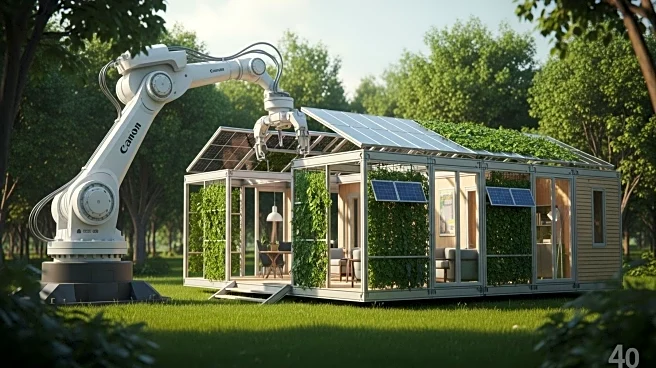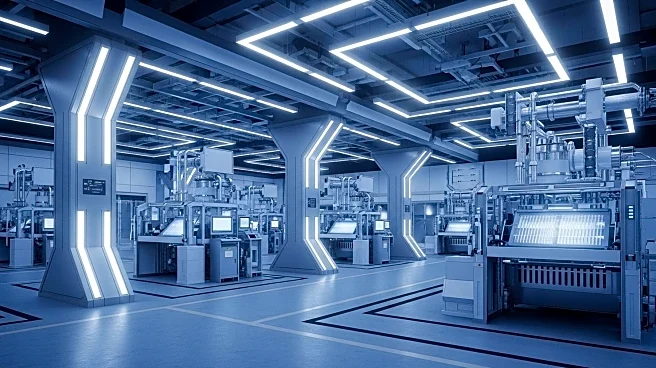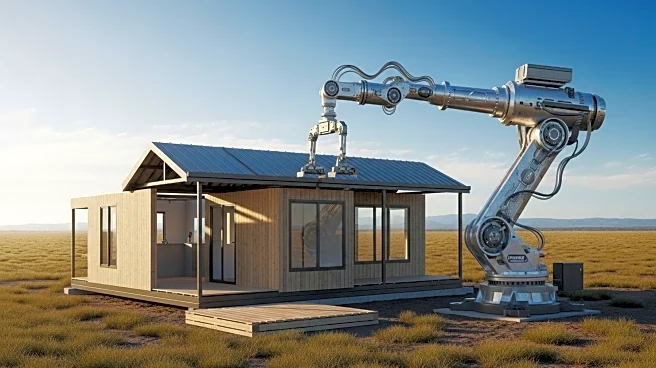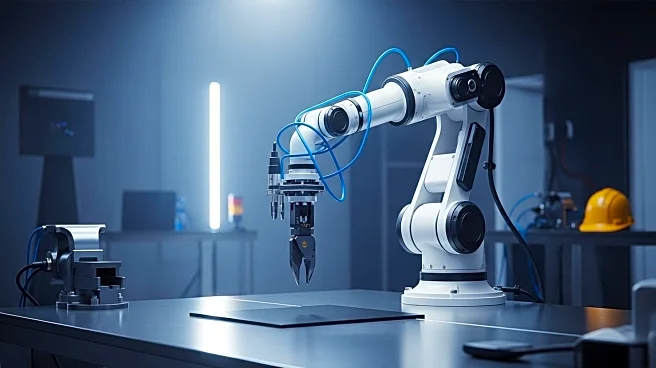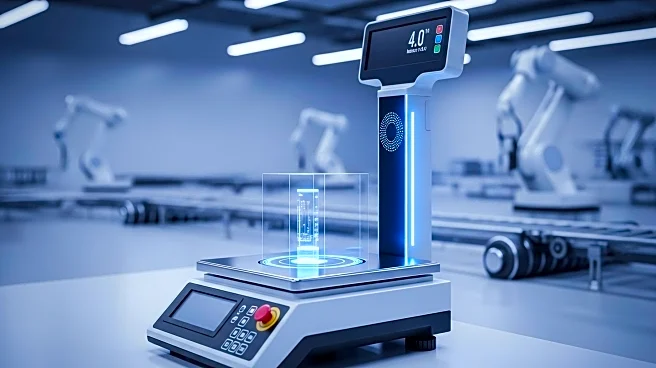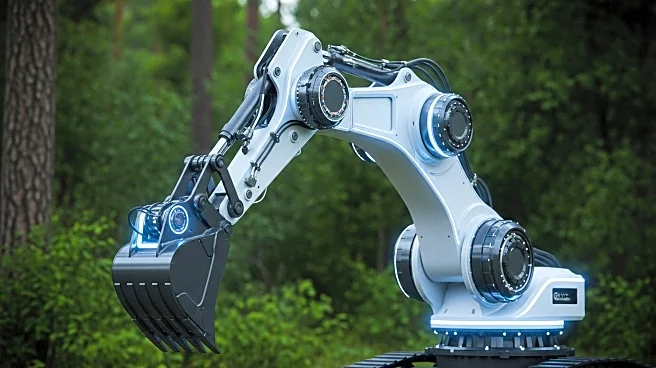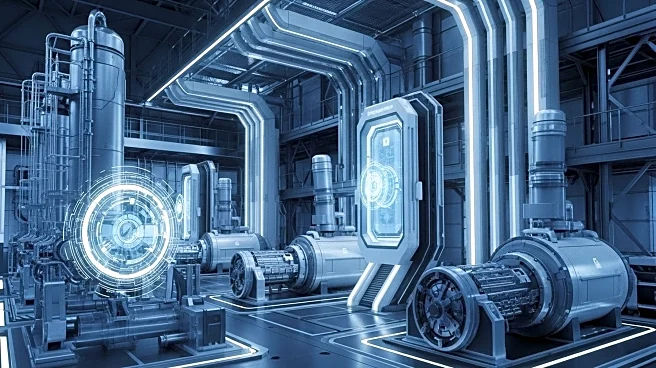What is the story about?
What's Happening?
The Australian housing sector is experiencing a transformation through the integration of robotics and AI in kit home construction. Prefabricated homes, known for their affordability and efficiency, are now being paired with advanced robotics and AI-driven logistics to offer unprecedented speed, precision, and cost efficiency. This development is particularly beneficial for buyers seeking affordable housing without compromising quality and for builders aiming to meet rising demand. Robotics are being used in prefabrication lines to perform tasks such as welding steel frames and cutting timber with precision, which accelerates production cycles and reduces material waste. Additionally, automated systems optimize material usage and reduce environmental disruption on-site, aligning with Australia's sustainability goals.
Why It's Important?
The integration of robotics and AI in kit home construction is significant for several reasons. It addresses workforce shortages in the construction industry by reducing dependency on skilled labor, particularly in regional areas. This technological advancement ensures consistent production volume, keeping kit homes competitive in price and build speed. Moreover, the automation of prefabrication contributes to sustainability by minimizing waste and environmental impact. As Australia faces housing shortages and rising traditional housing costs, robotics-driven prefab homes offer a viable solution. The government's encouragement of affordable housing solutions further supports the adoption of this technology, positioning Australia at the forefront of construction innovation.
What's Next?
Looking forward, the continued integration of robotics with AI is expected to further accelerate kit home construction. AI-driven software can optimize floor plans for energy use and material efficiency, while predictive analytics help manage supply chains to avoid costly delays. The scalability of robotic systems allows for quick production of add-on units, addressing housing shortages and providing families with flexibility. As automation scales, costs are expected to fall, enabling more builders to adopt robotics. This democratization of technology could see robotics-assembled kit homes becoming mainstream by the end of the decade, supported by government initiatives and regional councils.
Beyond the Headlines
The adoption of robotics in kit home construction presents challenges, such as high upfront costs for robotic equipment and the need for specialized technicians. Additionally, Australia's diverse climate and regulatory environment require factories to adapt designs to meet different state building codes. Despite these hurdles, the opportunities for innovation and affordable housing solutions outweigh the challenges. Government initiatives like the Housing Australia Future Fund are encouraging innovation, which could help subsidize robotic adoption. As automation becomes standard, robotics-driven prefab homes are poised to become a cornerstone of national housing policy.
AI Generated Content
Do you find this article useful?
